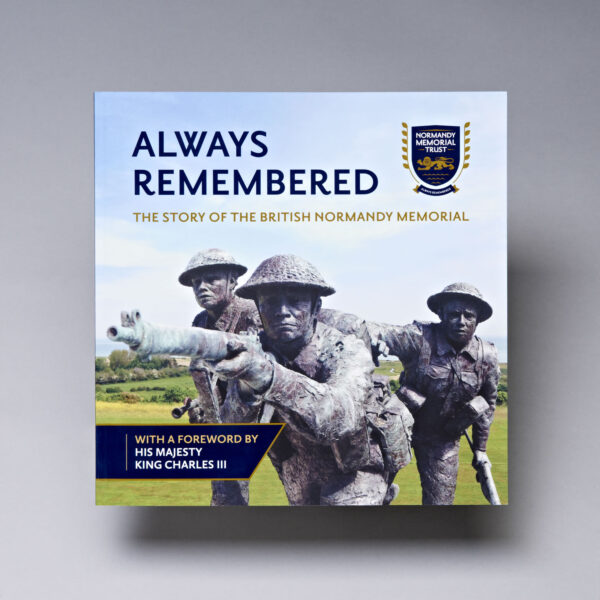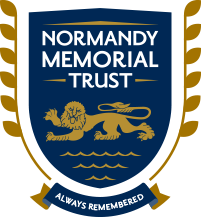
Harold George Almond Elphinstone
This story is shared by the Trust with kind permission from John Hamblin, Researcher.
Harold George Almond Elphinstone, Lieutenant Colonel 44867, 82 Assault Squadron, Royal Engineers. Killed in action on the 6th of June 1944, aged 34.
Harold George Almond Elphinstone was born at Eynsford, Kent on the 9th of April 1910, the second son of the Reverend Canon Maurice Curteis Elphinstone MA, Canon Emeritus of Wakefield Cathedral, and Christiana Georgiana (née Almond) Elphinstone of 3, Coates Hill Road, Bickley, Bromley in Kent.
He was educated at Loretto School, Musselburgh, East Lothian from May 1922 to July 1928 where he was appointed as a House Prefect and served as a Corporal in the Officer Training Corps. He was Prizeman of the VI Form. On leaving school he went into the Royal Military Academy Woolwich where he passed out 12th in his class and was commissioned as 2nd Lieutenant in the Royal Engineers on the 30th of January 1930.
He entered Jesus College, Cambridge on an officer’s course where he achieved 2nd Class Honours in the Engineering Tripos. He was promoted to Lieutenant on the 30th of January 1933. He was serving with the 5th Field Company, Royal Engineers when he was posted to India and was attached to the King George V’s Own Bengal Sappers and Miners. He saw action with them in the Waziristan campaign of 1937 and 1938 and was awarded the India General Service Medal. He was promoted to Captain on the 1st of August 1938 and to temporary Major on the 17th of December 1940.
Following the outbreak of the Second World War he served with PAI (Persia and Iraq) Force in Iran, Iraq and Syria and he saw action at the Battle of El Alamein in October 1942.
On the 27th of July 1943 he was appointed as the commanding officer of the 82nd Assault Squadron, Royal Engineers and was promoted to Acting Lieutenant-Colonel.
On D-Day 82nd Assault Squadron, Royal Engineers was equipped with Churchill AVRE tanks and was tasked with the clearing the beach of obstacles and enemy bunkers. They were to come ashore on Gold Beach and were accompanied by mine clearing “flail” tanks from B Squadron, Westminster Yeomanry. They had been split into three teams, all tasked with specific objectives once they were ashore.
They slipped anchor at 7.30am on the 5th of June 1944 and began landing on the beaches at 7.20am the following morning. No. 1 Team, on board Landing Craft 2026, led by Harold Elphinstone landed in the first wave of the assault on the Jig Green Sector of the beach. All the vehicles disembarked successfully with Harold Elphinstone’s tank engaging enemy pillboxes as soon as it was ashore. They had landed close to a German bunker which had been untouched by the shelling and contained an 88mm gun. Harold Elphinstone was standing in the open turret of his tank when the enemy gun opened fire and his tank was hit by a shell which killed him instantly.
By the end of the day all of the unit’s vehicles had proceeded inland to Caban. They had suffered casualties of one officer and one other rank killed, with two officers and three other ranks wounded.
Harold Elphinstone was Mentioned in Despatches for “Gallant and distinguished services in North West Europe”, which was announced by the War Office on the 22nd of March 1945. He is buried at Bayeux War Cemetery, Plot X, Row D, Grave 23 and he is commemorated on the war memorial at Loretto School and on the memorial at Jesus College, Cambridge.
FALLEN HEROES
HAROLD GEORGE ALMOND ELPHINSTONE
Army • MAJOR
Royal Engineers
82 Assault SquadronDIED | 06 June 1944
AGE | 34
SERVICE NO. | 44867
FALLEN HEROES
HAROLD GEORGE ALMOND ELPHINSTONE
Army • MAJOR
Royal Engineers
82 Assault SquadronDIED | 06 June 1944
AGE | 34
SERVICE NO. | 44867







